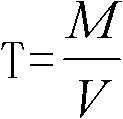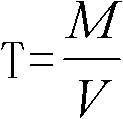Method for detecting tin content in tin-lead solder by utilizing lead acetate chelatometric back-titration method
A tin-lead solder and lead acetate technology, applied in the field of analysis and testing, can solve the problems affecting the authenticity of measurement data, inaccurate measurement results, inconvenient operation, etc., and achieve the effect of shortening detection time, reducing operation steps and facilitating operation.
- Summary
- Abstract
- Description
- Claims
- Application Information
AI Technical Summary
Problems solved by technology
Method used
Image
Examples
Embodiment 1
[0066] SnPb 40 Detection of tin content in medium:
[0067] The specific determination method steps are as follows:
[0068] 1. Standard substance analysis
[0069] 1) Weigh the standard substance
[0070] Weigh the standard substance with similar tin content in the sample, see Table 1:
[0071] Standard substance name
Tin content (%)
Sample weight (g)
tin-lead solder
59.45
1.0045
59.71
tin-lead solder
59.45
0.9998
59.44
[0072] (2) Dissolution of standard substances
[0073] Put the weighed standard substance in a 250ml beaker, add 50ml of mixed acid, heat in a cover glass at 50°C, lead chloride is precipitated, add 50ml of diluent, dissolve completely, transfer to a 250ml volumetric flask after cooling and dilute with water to full scale, shake well.
[0074] 3) Fractionation and titration of standard substances
[0075] Separately take 25.00ml of the above standard solution int...
PUM
 Login to View More
Login to View More Abstract
Description
Claims
Application Information
 Login to View More
Login to View More - R&D
- Intellectual Property
- Life Sciences
- Materials
- Tech Scout
- Unparalleled Data Quality
- Higher Quality Content
- 60% Fewer Hallucinations
Browse by: Latest US Patents, China's latest patents, Technical Efficacy Thesaurus, Application Domain, Technology Topic, Popular Technical Reports.
© 2025 PatSnap. All rights reserved.Legal|Privacy policy|Modern Slavery Act Transparency Statement|Sitemap|About US| Contact US: help@patsnap.com



